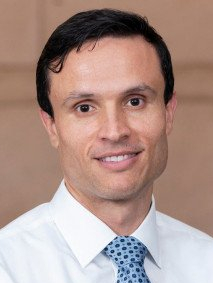Characterizing a learning curve for robotic-assisted bronchoscopy: Analysis of skills acquisition in a high-volume academic center Journal Article
| Authors: | Bott, M. J.; Toumbacaris, N.; Tan, K. S.; Husta, B. C.; Medina, B. D.; Adusumilli, P. S.; Beattie, J. A.; Lee, R. P.; Park, B. J.; Dycoco, J.; Jones, D. R.; Chawla, M.; Rocco, G.; Kalchiem-Dekel, O. |
| Article Title: | Characterizing a learning curve for robotic-assisted bronchoscopy: Analysis of skills acquisition in a high-volume academic center |
| Abstract: | Objective: Shape-sensing robotic-assisted bronchoscopy is an emerging technology for the sampling of pulmonary lesions. We seek to characterize the shape-sensing robotic-assisted bronchoscopy learning curve at an academic center. Methods: Shape-sensing robotic-assisted bronchoscopy procedures performed by 9 proceduralists at a single institution were analyzed. Cumulative sum analyses were performed to examine diagnostic sampling and procedure time over each operator's first 50 cases, with the acceptable yield threshold set to 73%. Results: During the study period, 442 patients underwent sampling of 551 lesions. Each operator sampled 61 lesions (interquartile range, 60-63 lesions). Lesion size was 1.90 cm (interquartile range, 1.33-2.80 cm). The median procedure time for single-target cases decreased from 62 minutes during the first 10 cases to 39 minutes after case 40 (P < .001). The overall diagnostic yield was 72% (range, 58%-83%). Six of 9 operators achieved proficiency over the study period. An aggregated cumulative sum analysis of those who achieved competency demonstrated a steep improvement between lesions 1 and 21 and crossing of the competency threshold by lesion 25. Temporal analysis of yield-related lesion characteristics demonstrated that at approximately lesion 20, more challenging lesions were increasingly targeted, as evidenced by smaller target size, higher rates of unfavorable radial endobronchial ultrasound views, and a negative bronchus sign. Conclusions: Skills acquisition in shape-sensing robotic-assisted bronchoscopy is variable. Approximately half of proceduralists become facile with the technology within 25 lesions. After the initial learning phase, operators increasingly target lesions with more challenging features. Overall, these findings can inform certification and competency standards and provide new users with expectations related to performance over time. © 2024 The American Association for Thoracic Surgery |
| Keywords: | adult; controlled study; human tissue; aged; major clinical study; follow up; cancer diagnosis; prospective study; lung cancer; diagnostic value; heart failure; diabetes mellitus; comorbidity; general anesthesia; bronchoscopy; asthma; robotics; forced expiratory volume; university hospital; lung function test; coronary artery disease; chronic obstructive lung disease; cerebrovascular accident; cone beam computed tomography; lung lesion; fluoroscopy; medical history; carbon monoxide; lung lobe; pulmonary hypertension; anesthetic agent; endobronchial ultrasonography; learning curve; proficiency; never smoker; human; male; female; article; high volume hospital; two-dimensional imaging; knowledge gap; right lung; current smoker; ex-smoker; diffusing capacity for carbon monoxide; thoracic malignancy; navigational bronchoscopy; left lung; shape sensing robotic assisted bronchoscopy; undiagnosed disease |
| Journal Title: | Journal of Thoracic and Cardiovascular Surgery |
| Volume: | 169 |
| Issue: | 1 |
| ISSN: | 0022-5223 |
| Publisher: | Mosby Elsevier |
| Date Published: | 2025-01-01 |
| Start Page: | 269 |
| End Page: | 278.e6 |
| Language: | English |
| DOI: | 10.1016/j.jtcvs.2024.06.018 |
| PUBMED: | 38936600 |
| PROVIDER: | scopus |
| PMCID: | PMC11655264 |
| DOI/URL: | |
| Notes: | The MSK Cancer Center Support Grant (P30 CA008748) is acknowledge in the PDF -- Corresponding authors is MSK authors: Matthew J. Bott -- Source: Scopus |
Altmetric
Citation Impact
BMJ Impact Analytics
MSK Authors
Related MSK Work















